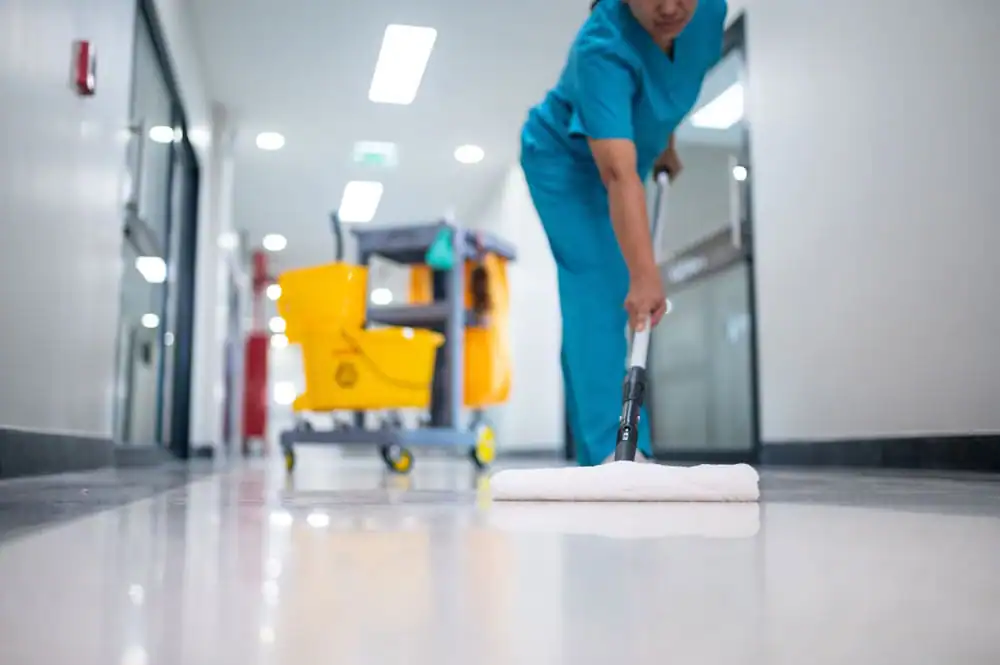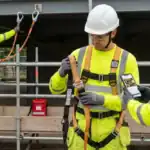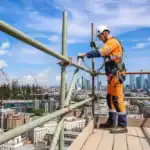
The average employee probably doesn’t consider fire safety when setting up their workstation. Convenience and comfort are more important when deciding where to put paper files or plug in a charger. But oversights like this can increase fire risks. That’s why every employer must promote good fire safety housekeeping practices in the workplace.
This blog explores common fire safety blind spots and housekeeping rules you can use to reduce workplace fire risks for free.
Who is Responsible for Workplace Fire Safety?
The “responsible person” is the individual in charge of workplace fire safety. As an employer, you are the responsible person and must ensure compliance with the Regulatory Reform (Fire Safety) Order 2005.
Your first and most important duty is to conduct a fire risk assessment. This assessment helps you identify fire risks and plan measures to reduce them. Some measures could be considered housekeeping, such as storing flammable items securely or keeping fire exits clear.
In addition to risk assessments, you must provide basic fire safety training to all staff when they join and offer refresher training each year to reinforce knowledge.
Employees also have a duty to cooperate with you on fire safety and apply their training. As part of this, they should adopt good fire safety housekeeping practices in the workplace.
Why are Good Fire Safety Housekeeping Practices in the Workplace Necessary?
At the most basic level, fire prevention is keeping the three elements of the fire triangle separate.
These elements are:
- Fuel – anything that can burn, such as paper, fabrics and flammable liquids.
- Heat – the energy needed to reach the point of ignition.
- Oxygen – the element that keeps a fire burning.
Since you obviously can’t remove oxygen from your workplace, fire prevention can be further simplified to keeping fuel away from heat sources.
This concept is essentially good housekeeping: giving everything its place and, if something’s flammable, ensuring that place is a sufficient distance from any heat sources.
It also extends to caring for electrical appliances. Appliances that are regularly checked and maintained in good working order are less likely to malfunction and overheat.
And if good housekeeping helps fire safety, poor housekeeping, unsurprisingly, does the opposite.
Fire Safety Training
Our Fire Safety Training course gives a basic understanding of fire prevention principles, the sources of ignition and fuel and safe systems of work to prevent fire hazards and accidents within the work environment.
Why is Poor Housekeeping a Fire Hazard?
Poor housekeeping hurts fire safety in several ways. Firstly, it makes fires more likely. Fuel dumped dangerously close to heat sources (or vice versa) is at risk of igniting. Similarly, poorly maintained electrical equipment can overheat or spark, providing an unexpected heat source.
And if a fire does happen, poor housekeeping can be disastrous. It allows fires to grow faster and slows down any emergency response.
For example, if team members can’t access firefighting equipment quickly enough, they could miss the opportunity to extinguish the fire while it’s still relatively safe. Employees heading straight for the fire exits might also waste precious seconds navigating cluttered corridors or blocked doorways.
Then there are fire doors. Fire doors are one of the most important passive fire protections. In an emergency, they’re designed to close and contain flames and heat, preventing fires from spreading and protecting escape routes. But an open fire door is useless. Too often, employees absentmindedly prop fire doors open for convenience. Clutter can also prevent a fire door from closing fully.
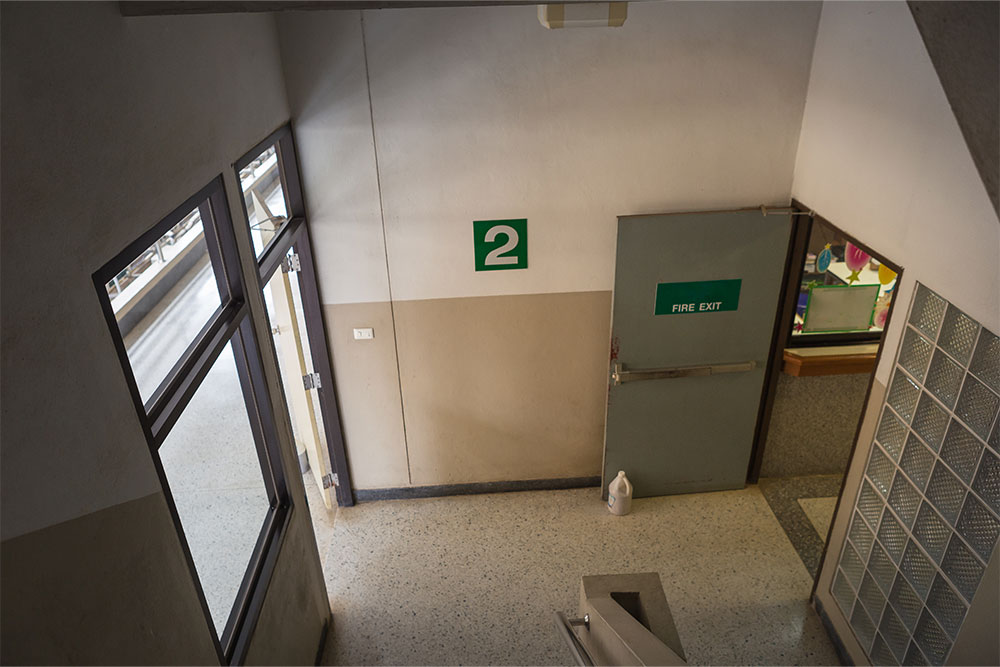
7 Good Fire Safety Housekeeping Practices in the Workplace
Good fire safety housekeeping practices in the workplace reduce fire risks and remove obstacles to evacuation and firefighting. Here, we’ve outlined seven housekeeping rules you can implement to boost fire safety in your workplace.
1. Put Things Away Properly
Housekeeping in fire prevention should start with safely storing flammable materials. This should be part of your workplace fire risk assessment, but are employees aware?
A risk assessment doesn’t make your workplace safer unless it’s being used. Make sure that you’ve identified areas where fuel and heat sources might meet and planned how to keep them isolated. Then, communicate this as clearly as possible to employees.
This process shouldn’t be one-way, either. Employees will ignore or bend rules if they slow down or complicate work, so get their input. Consulting with employees will increase buy-in and ensure plans are practical.
2. Check Electrical Equipment
You must ensure the safety of any electrical equipment (including your employees’ own devices) used at work, so it’s important to check it regularly.
Train employees to visually check electrical devices before using them. This process doesn’t need to be in-depth but should cover the whole appliance, including its cable and plug socket. If there are obvious faults or signs of overheating, the equipment should be isolated until a competent person can inspect it.
Electrical equipment should undergo regular portable appliance testing (PAT) in addition to visual checks. Although PAT isn’t legally required, it’s widely regarded as the best way to ensure electrical equipment is safe to use.
And don’t forget electrical safety fundamentals:
- Avoid overloading sockets: Plugs crowded together are prone to overheating.
- Check cords, plugs and power strips: Regularly check electrical cords and plugs for damage. Retire any with signs of overheating or frayed/exposed wires.
- Turn off equipment when not in use: Always switch off and unplug electrical equipment to prevent overheating.
3. Use Heaters Responsibly
Concentrating when you’re cold is impossible, so portable heaters are common throughout workplaces, especially in workshops or garages open to the elements.
Portable heaters are electrical devices, so they need regular checks like other equipment. But these appliances are designed to generate heat, so they’re a fire risk even when working correctly.
Mount heaters on the wall where possible to prevent them from tipping over. If this isn’t possible, place them on stable, non-flammable surfaces.
And it’s vital to keep them at least three feet away from combustible materials.
4. Keep Kitchens Tidy
Non-commercial workplace kitchens aren’t typically well looked after.
Employees often use them in a hurry and sometimes don’t even tidy up after themselves, let alone colleagues. A lack of cleaning leads to build-ups of grease, oil or crumbs in appliances. This food debris is another fuel source, often trapped inside appliances built to heat things.
Cleaning kitchen appliances after use prevents flammable foodstuffs from accumulating. It’s also critical to watch food as it cooks. Again, employees may be under pressure to get back to their work, but leaving cooking unattended is a serious fire risk.
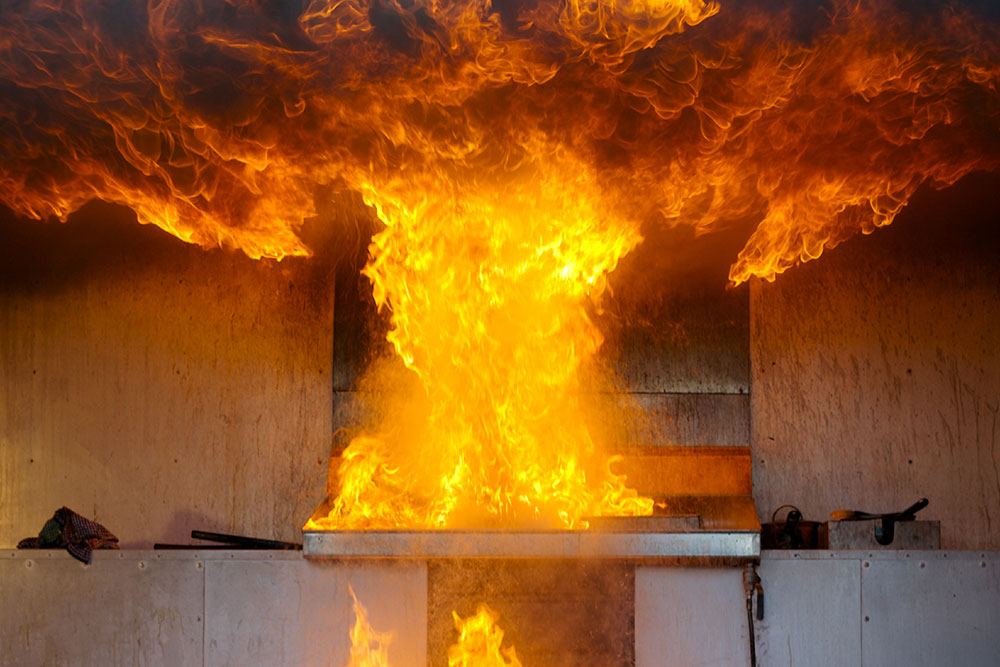
5. Avoid Clutter
This point has already been mentioned. Clutter could block access to firefighting equipment or alarm points, making it harder to tackle a fire or alert others before it gets out of hand. Clutter can also create obstacles for evacuation routes.
Ensure that employees regularly dispose of rubbish and unnecessary items. If this is a consistent issue, provide more storage spaces or bins.
You must also keep pathways and exits clear of obstacles to ensure safe evacuation. Whoever has been appointed to manage fire safety should routinely check that evacuation routes are clear and that firefighting equipment is accessible.
6. Keep Fire Doors Closed
Fire doors are essential for containing fires and protecting escape routes. Make it clear that they can’t be propped open for convenience.
It goes beyond simple housekeeping, but you must also ensure your fire doors are regularly inspected and maintained in safe working order.
7. Ensure Fire Safety Training is Up to Date
Fire safety training must be part of every new starter’s induction. It must also be repeated annually for existing employees.
Staff turnover can make tracking who needs a refresher course difficult, especially without a dedicated training manager.
Online training is one solution, as it makes tracking and managing training records much easier. It’s also easier to assign training and allow employees to complete it during quiet periods. And, if they do get interrupted, they can pause the training and pick it back up later.
Good Fire Safety Housekeeping Practices in the Workplace – Key Takeaways
- Store flammable materials properly, check electrical equipment regularly, use heaters responsibly and keep kitchens clean.
- Dispose of rubbish, keep exits clear and ensure fire doors are closed and regularly checked.
- Provide fire safety training when employees start and annual refreshers for existing staff.
Online Fire Safety Training
Our online Fire Safety Training offers flexibility for you and your team. It’s suitable for general fire safety induction training and regular refresher training, both of which are legal requirements.
Employees will appreciate their role in fire prevention and learn to identify and control fire hazards, including the importance of good housekeeping. They will also learn proper fire safety evacuation procedures and how to handle firefighting equipment – all essential knowledge that protects lives in the event of a fire.

